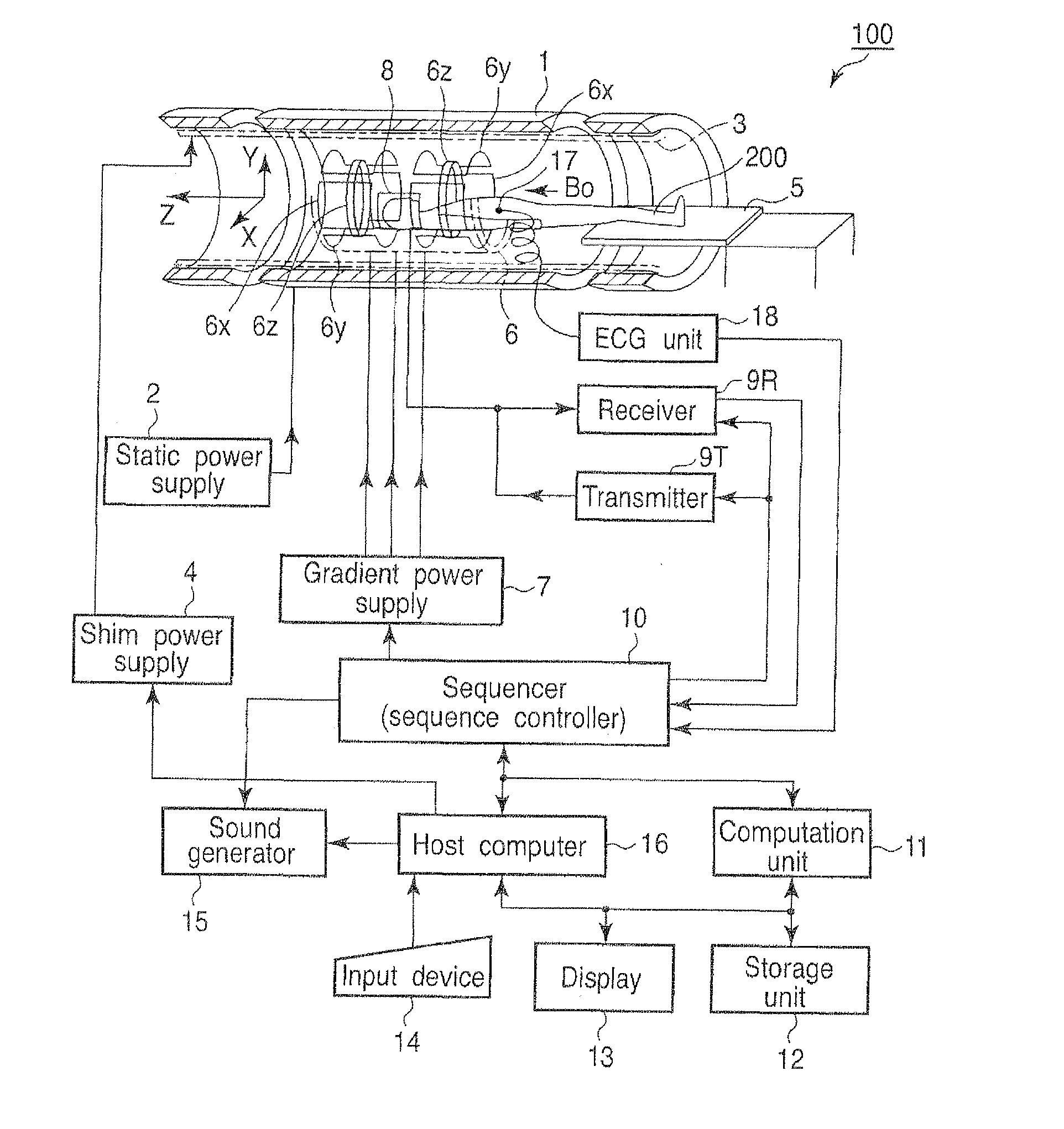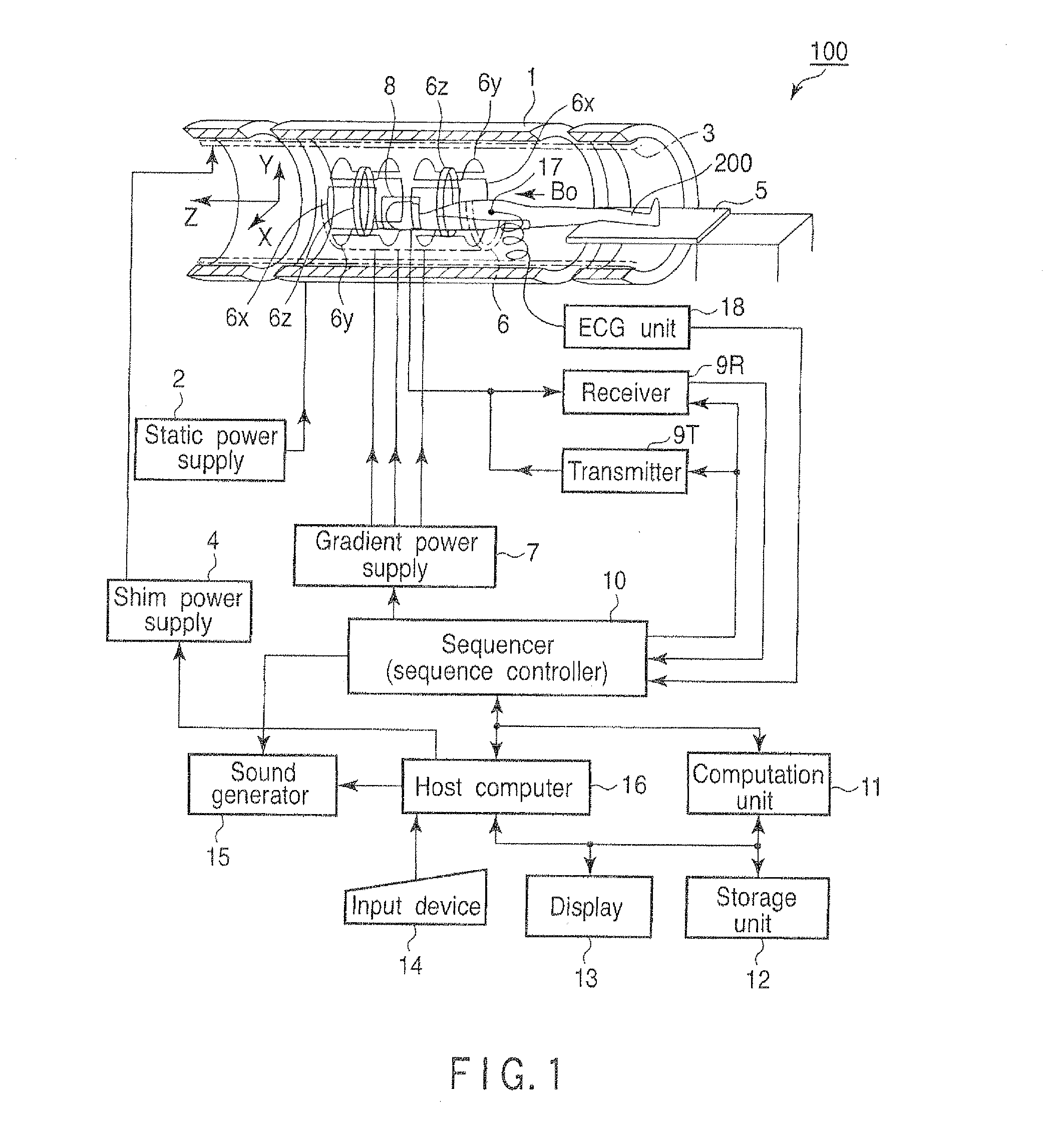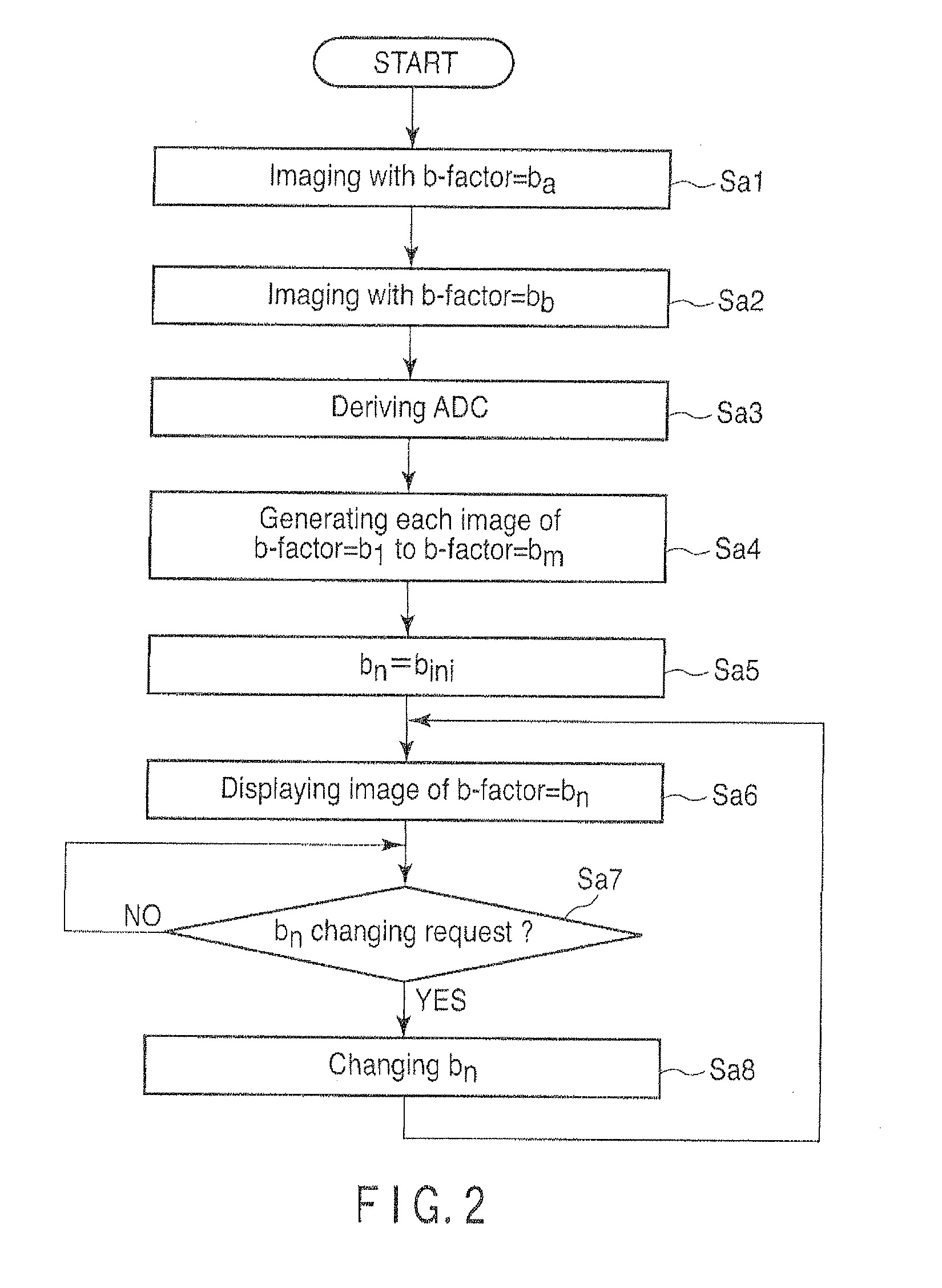MRI DIFFUSION WEIGHTED IMAGING WITH ESTIMATED MOTION PROBING GRADIENT b-FACTORS BASED ON ACQUIRED APPARENT DIFFUSION COEFFICIENTS FOR EACH PIXEL
a diffusion weighted imaging and gradient technology, applied in the field of magnetic resonance diagnostic equipment and magnetic resonance diagnostic methods, can solve the problems of motion artifacts increasing, snr (signal-to-noise ratio) deteriorating, and the cost of increasing
- Summary
- Abstract
- Description
- Claims
- Application Information
AI Technical Summary
Benefits of technology
Problems solved by technology
Method used
Image
Examples
first embodiment
[0044]An operation carried out in a first embodiment of the magnetic resonance diagnostic apparatus 100 will be explained.
[0045]FIG. 2 is a flow chart showing a processing procedure in the first embodiment of the host computer 16.
[0046]In step Sa1, the host computer 16 instructs the sequencer 10 to carry out imaging in a predetermined region of interest, by setting a b-factor as a predetermined value ba. In accordance with this instruction, the sequencer 10 operates the gradient power supply 7, the transmitter 9T, the receiver 9R and the computation unit 11 etc., so as to carry out imaging by using a b-factor that has value ba. The image imaged here will be referred to as a first original image hereinafter.
[0047]Value ba can be an arbitrary value. However, 0 is preferable. In the case where ba=0, for imaging in step Sa1, it is fine to use T2 weighted imaging by a spin echo (SE) method or a fast spin echo (FSE) method. It is also fine to use imaging by a single-shot isotropic EPI met...
second embodiment
[0063]An operation in a second embodiment of the magnetic resonance diagnostic apparatus 100 will be explained.
[0064]FIG. 6 shows a flow chart illustrating a process procedure in the second embodiment of the host computer 16. Further, the same symbols are given for processes that are the same as those in FIG. 2, and explanations thereof will be omitted.
[0065]In step Sb1, the host computer 16 determines the part of the subject to become the target for imaging in the subsequent processes (hereinafter referred to as an imaging portion). The imaging portion can be determined in accordance with the user's assignment input via, for example, the input device 14.
[0066]In step Sb2, the host computer 16 instructs the sequencer 10 to carry out imaging with regard to a preset region of interest, by setting the b-factor as a setting value ba regarding an imaging portion. In accordance with this instruction, the sequencer 10 operates the gradient power supply 7, the transmitter 9T, the receiver 9...
third embodiment
[0081]The operation in a third embodiment of the magnetic resonance diagnostic apparatus 100 will be explained.
[0082]FIG. 8 is a flow chart showing the process procedure in the third embodiment of the host computer 16. Further, the same symbols are given for processes that are the same as in FIG. 2, and explanations thereof will be omitted.
[0083]Firstly, in step Sa1, the host computer 16 images the first original image in the same manner as in the first embodiment, then proceeds to step Sc1.
[0084]In step Sc1, the host computer 16 determines the imaging portion and acquires a diffusion coefficient D regarding the imaging portion thereof. A diffusion coefficient differs for each anatomy in the human body. Further, a standard diffusion coefficient in a normal tissue is already known. Therefore, an information table as shown in FIG. 9 that specifies the standard diffusion coefficient of an anatomy that may become the imaging portion is stored in the storage unit 12 in advance in associa...
PUM
 Login to View More
Login to View More Abstract
Description
Claims
Application Information
 Login to View More
Login to View More - R&D
- Intellectual Property
- Life Sciences
- Materials
- Tech Scout
- Unparalleled Data Quality
- Higher Quality Content
- 60% Fewer Hallucinations
Browse by: Latest US Patents, China's latest patents, Technical Efficacy Thesaurus, Application Domain, Technology Topic, Popular Technical Reports.
© 2025 PatSnap. All rights reserved.Legal|Privacy policy|Modern Slavery Act Transparency Statement|Sitemap|About US| Contact US: help@patsnap.com



